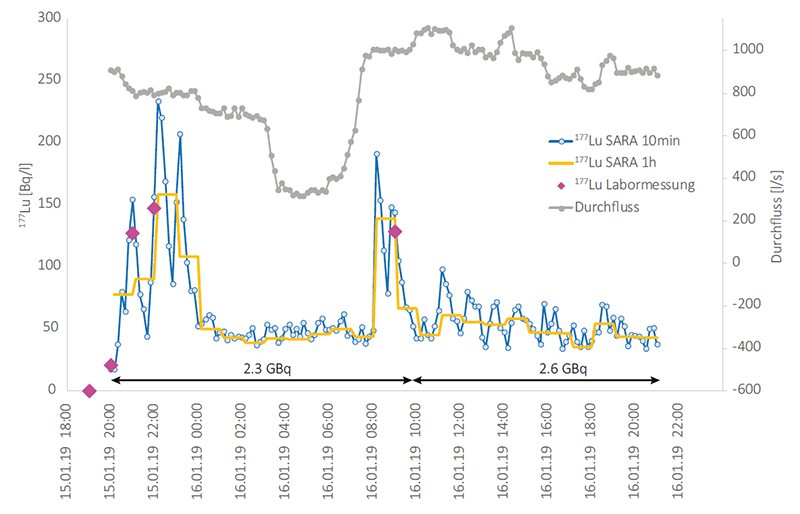Clean in, clean out
SARA monitors both drinking water and wastewater
As you no doubt recall, in our January newsletter last year, we reported that the Swiss provider IWB was deploying SARA to monitor drinking water. River water is converted into precious drinking water. At a later point, after being used by consumers, this drinking water will eventually become river water again. During this time, whether intentionally or not, radionuclides are released into the water, for example as a result of nuclear medicine processes. Keen to determine the extent of radionuclides in the wastewater, the Swiss Federal Office of Public Health (FOPH / BAG) installed a SARA Water in the wastewater treatment plant in Basel and subsequently in Bellinzona.
One prominent example of medical radionuclide therapy is Lu-177, which is excreted indirectly by patients and released directly by clinics, before ending up in the wastewater. SARA was successful in reliably identifying the isotope. To verify the readings, the FOPH took water samples at various points in time and sent them to the lab for analysis. The verdict: SARA's readings are perfectly consistent with the laboratory measurements.

Timeline of the Lu-177 concentration in wastewater after being discharged by a university hospital. Blue: SARA 10min Lu-177, yellow: 1h (left axis). Pink dots: Laboratory measurements. Grey: Water flow (l/s, right axis). Source: Annual report on "Environmental radioactivity and radiation levels in Switzerland 2019," published by the FOPH, p. 194 (www.bag.admin.ch/ura-jb, only available in German)
Moreover, other isotopes were easily detected in wastewater: Tc-99m, the most widely used diagnostic radionuclide; I‑131, used in thyroid therapy, and various PET nuclides, such as F-18, are also clearly evident in the gamma spectrum. One interesting insight is that the progression of the nuclide concentration makes it possible to study the dynamics of the wastewater network in cases where the radionuclide discharge is known, for example, in the controlled release of hospital sewage.
SARA's in-situ nuclide identification makes it easy to separate precipitation and the resulting peaks in the dose rate, due to the influx of natural radionuclides such as Bi-214 and Pb-214, from those caused by artificial events. According to the FOPH, the good news is that no thresholds were exceeded in their measurements and the water can be safely returned to the river.
Whether you are interested in radionuclides in the inlet or the outlet water supply, do not hesitate to contact our ENVINET experts at
ENVINET – Leading in Environmental Radiation Detection
Best regards
Your
ENVINET Team